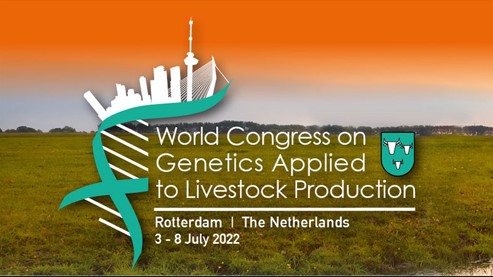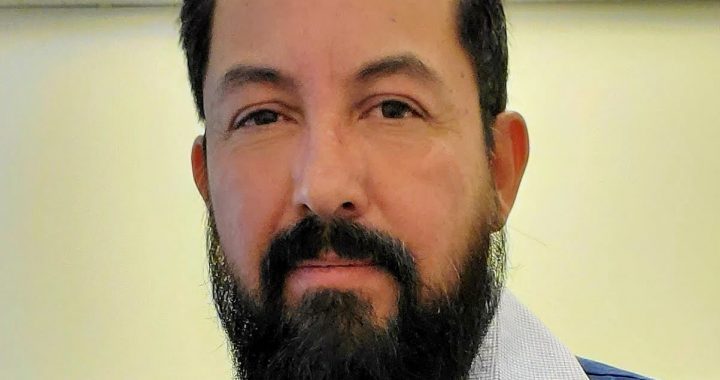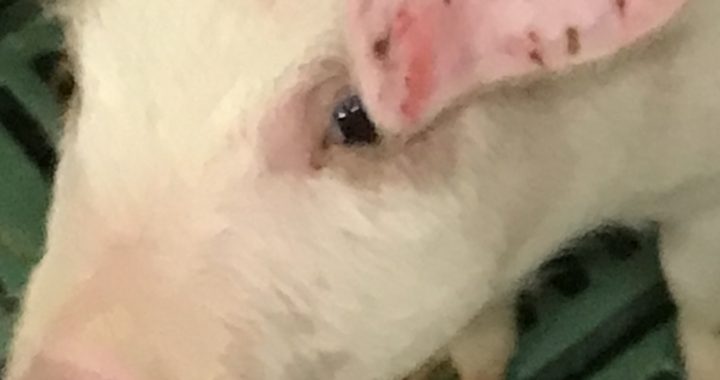The scientific sessions at the 2022 World Congress on Genetics Applied to Livestock Production (WCGALP ) in Rotterdam, the Netherlands, covered many aspects of livestock genetics including genomic predictions (with subtopics of methodologies and tools, challenges, use of complete DNA sequence for genomic predictions), statistical genetics, animal health and welfare, animal breeding in developing countries, novel phenotyping tools, and utilizing genetic diversity. Gentec Research Associates Marzieh Heidaritabar, Liuhong Chen and Dan Hailemariam provide some insights here.
A topic Marzieh is interested in is how to improve the accuracy of predicting genomic breeding values to improve animal selection to enhance genetic progress in commercial livestock breeding programs. She notes that University of California Davis scientists have developed a novel method called “NN-LMM”, which incorporates intermediate omics features (such as gene expression, metabolomics and DNA methylation) by adding middle layers between genotypes and phenotypes. NN-LMM has significantly better prediction accuracy than the commonly-used (standard) single-step genomic prediction approach. This shows the added value of omics data in genetic evaluations and, in Marzieh’s view, this novel approach could be a more useful way than the conventional method of estimating the genomic breeding values in companies’ routine genetic evaluations . Gentec is investigating these areas as part of the international BovReg project.
Liuhong is particularly interested in new methods for genomic selection since it has revolutionized livestock breeding. The methods have evolved from classic approaches to two-step approaches and to single-step approaches which have become the standard. As a result, single-step genomic selection was one of the hot topics at the conference. What will next-generation genomic selection look like? Listening to the talks from top researchers around the world, one could imagine next-gen genomic selection would integrate multiple innovative technologies, such as precision phenotyping, alternative genotyping, machine learning, functional genomics, and multi-omics approaches (as above) as well as gene editing. Gentec researchers have been working on many of these fascinating areas. See some of our 2022 articles on gene editing here and here.
Liuhong presented a new approach that enables the parallel implementation of Bayesian methods (a statistical workhorse for large datasets) for genomic prediction. He is continuing to improve the approach so that it can run efficiently with whole-genome sequence data. He is also working with Gentec CEO Graham Plastow, Gentec Director of Beef Operations John Basarab, and AAFC/Gentec researcher ChangXi Li to develop approaches that use breed-specific haplotypes to improve the estimation of genomic breed composition, retained heterosis and multi-breed genomic predictions in beef cattle. He comments “Attending conferences like this provided opportunities to learn from others and stay at the forefront of genetics and genomics research in livestock.”
Marzieh also attended presentations related to animal health and well-being. Novel welfare-related traits are increasingly receiving more attention in breeding programs in relation to maintaining social license and being included in breeding objectives (using multi-trait selection indices), particularly for group-housed species like chickens and pigs. These animals interact socially and can affect each other’s phenotype, meaning that, besides the direct genetic effects of the animal itself, the indirect genetic effects of its housemates can impact the phenotype of the animal. This seems to be particularly important for aggressive interactions/behaviours. For instance, in pigs, social interaction traits related to aggression were moderately heritable, and there were positive genetic correlations between the aggression traits and pig skin lesions. New findings showed that social interactions are also relevant for beef and dairy cattle for welfare and disease transmission. Researchers at Wageningen University developed a novel method, an extension of the classic social genetic model, for the breeding value estimation for social traits in large groups. This method, along with proper recordings of social interactions, could be very applicable in animal breeding (see here).
Another interesting presentation from Wageningen was on the development and validation of an approach for pig breeders to better predict the purebred-crossbred genetic correlation from phenotype and genotype data of parental lines (based on approximated genetic variance components of parental lines). This approach could also be applied for other livestock animals in which crossbreeding is the main breeding scheme. (This is another area where Gentec and partners are active in pigs and beef cattle, where the majority of the commercial herd is crossbred. A recent publication on our pig work is here. ) On the cattle side, Ben Hayes (University of Queensland), leader of the 1000 Bull Genomes project and an adjunct professor at UAlberta presented new work on improving genomic prediction in crossbred cattle in Northern Australia. He acknowledged some older Gentec work as one of two approaches that enabled their innovation (see here ).
The phrase “in the age of genomics, phenotype is king” is one Mike Coffey (SRUC) introduced to us at different Gentec events. Not surprisingly the use of novel phenotyping tools received a lot of attention at WCGALP. The tools include video, GPS, sensors and milk spectra. Recording or tracking behavioural traits and dry matter intake with camera systems and using machine learning to analyze the mass of data generated shows great promise for hard-to-measure traits. Among the different machine learning algorithms, the use of artificial neural networks was emphasized, as it takes into account the non-linear relationships between variables. It is possible to automate computer vision for monitoring important behaviors (tail biting and lameness) in the pig industry (see here). One example is the Virtual Tag (VTag) software that substitutes hand-annotated data to accelerate pig behavioural studies. A 3D camera technology has been developed by Danish researchers to measure feed intake and body weight on individual cows in commercial farms. A high squared correlation (R2 = 0.9) between feed intake measured with scales and cameras was reported.
Under the theme of Functional Annotation of Genomes, papers related to the discovery of causal genetic variants and recessive defects for different traits in different species were presented. One example was detecting recessive loci responsible for increased mortality in cattle. The researchers screened for homozygous haplotype enrichment/depletion in groups of females in different life trajectories and identified 34 deleterious haplotypes with frequencies ranging from 1.5 to 7.6%. A Gentec collaboration with this group identified a missense variant within the host Synaptogryin-2 gene significantly associated with PCV2b viral load. In this follow-on study, the Nebraska team generated a porcine kidney 15 (PK15) clone homozygous for the “favourable” SYNGR2 p.63Cys allele using in vitro CRISPR-Cas9 gene editing. Infection of this edited PK15 clone demonstrated a significant reduction in total PCV2b replication starting 48 hours after infection compared to wild-type PK15 cells. A nice example of using gene editing to confirm the effect of causative mutations to help increase our knowledge of the underlying biology of complex traits such as disease resilience.
In summary, WCGALP 2022 was a successful event that brought together livestock genetics and breeding researchers around the globe to share their ideas and results on the challenges facing the sector. Improving resilience of livestock species to the changing environment including disease is another area where Gentec is very active and that was identified as an important approach for the future.








